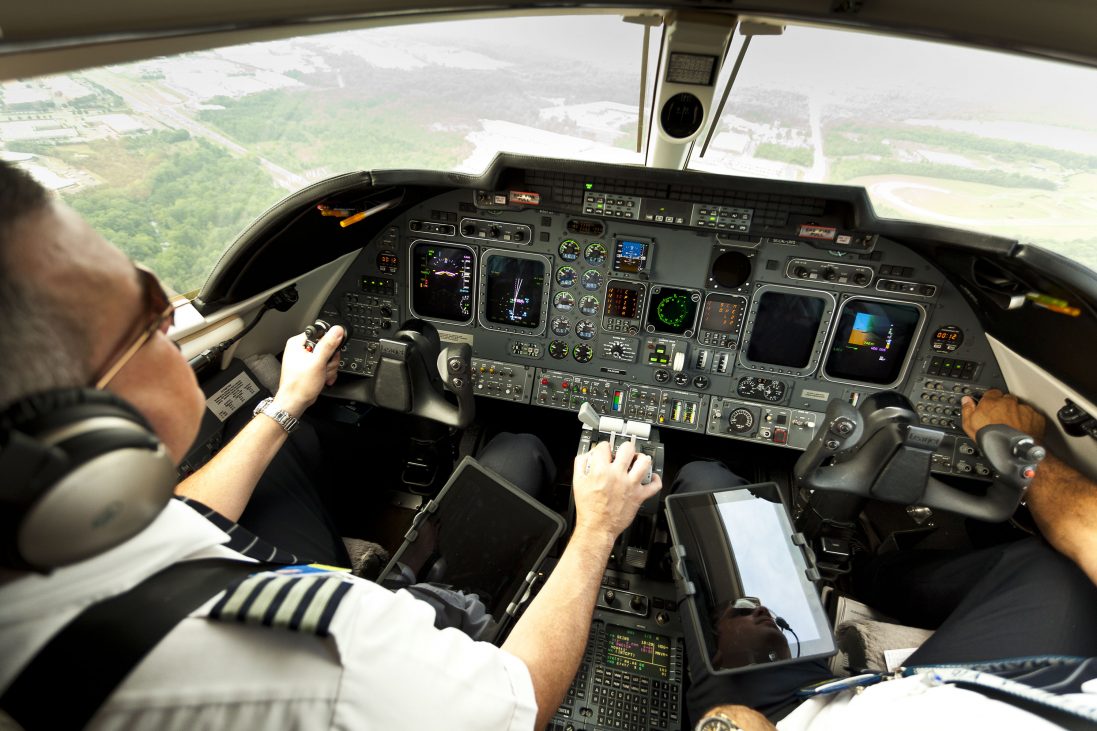
Background Information
While traditional Secondary Surveillance Radar (SSR) stations interrogate all aircraft within their range, Mode S (Select) establishes selective and addressed interrogations with aircraft within its coverage. Such selective interrogation improves the quality and integrity of the detection, identification and altitude reporting. The Mode S system is a combined secondary surveillance radar (beacon) and ground-air-ground data link system. This technology can improve the quality of aircraft detection, identification and altitude reporting information.
In addition, Mode S provides the medium for a digital data link which can be used to exchange information between aircraft and various air traffic control functions and weather databases. This technology, along with future improvements, will the basis for ADS-B equipage aboard many business aircraft. Through the Mode S ‘extended squitter’ function used by ADS-B systems aircraft are able to transmit their position and also report their unique aircraft identity (call sign).
Eurocontrol Mode S Program
Beginning in the mid-1990s, the aircraft surveillance system used in core European airspace was reaching capacity. To allow for continued growth, the Mode S program was launched as a replacement for SSR using Mode A/C transponders. The program became fully operational in 2009. There are currently two levels of SSR Mode S, Mode S Elementary Surveillance (ELS), and Mode S Enhanced Surveillance (EHS).
Mode S ELS
Mode S ELS is currently required for IFR flights in the airspace over much of Europe, including: Belgium, France, Germany, Luxembourg, the Netherlands, Switzerland, Italy, the Czech Republic, Hungary and Greece.
One of the key benefits of Mode S ELS is the assignment to each aircraft of a unique ICAO 24-bit address by the state of registry. Mode S ELS uses this unique 24-bit aircraft address for selective interrogation and to acquire down linked aircraft identification, known as Flight ID or aircraft call sign. The technology also allows ATC equipment to acquire altitude in 25 foot increments.
Mode S EHS
Aircraft with a maximum takeoff weight greater than 12,566 lbs (5,700 kg) or a maximum cruise true airspeed greater than 250 knots must be equipped with Mode S EHS to operate in the United Kingdom, Germany and France.
EHS is intended to provide additional information about an aircraft’s state and intent for use by air traffic controllers. It includes the elements of information (called Downlink Aircraft Parameters – DAPs). The DAPs include:
- Magnetic heading
- Indicated airspeed / Mach Number
- Vertical Rate
- Roll Angle
- Track Angle Rate
- True Track Angle
- Ground Speed
- Selected Altitude
This information is designed to offer improved situational awareness for air traffic control while reducing radio congestion. Access by controllers to aircraft intent DAPs allows cross-checking of climb/descent instructions and help the early identification of potential loss of separation incidents.
Exemptions from Mode S Requirements
Eurocontrol has identified certain aircraft that are unable to support the full set of DAPs due to avionics equipage issues. Aircraft that are unable to provide the full set of 8 DAPs are considered to be Mode S EHS non-capable and may be able to obtain an exemption, if the aircraft is Mode S ELS equipped. Exemptions may also be available for aircraft conducting test, delivery or maintenance flights. National Aviation Authorities are now responsible for granting exemptions for each respective country. Visit the Eurocontrol Mode-S Exemption page for more information.


 International Business Aviation Council Ltd.
International Business Aviation Council Ltd.